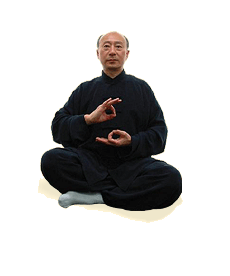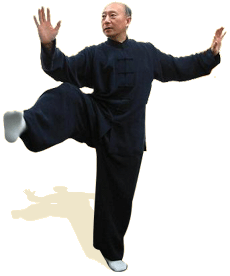Concepts and Definition of Chinese Qi-gong
The term qi-gong (pronounced "chee kung') is formed by two Chinese characters: "qi" (energy) plus "gong" (work or practice). Its closest translation is "energy cultivation" requiring the integration of mind and body. It is based on the concept of Chinese qi physiology; the ancient Chinese believed qi was the most fundamental entity making up the world, and everything in the universe resulted from the movement and change of qi. By tracking and building up our own qi, a practitioner of qi-gong can activately realign all levels, move together or create new internal environments in the body. Moreover, this kind of self-practice exercise helps to attain a higher level of intellectual and spiritual states of mind.
Qi-gong is recongized as part of China's
cultural heritage
and one of its national treasures. Beginning in childhood the Chinese are taught self negligence causes illness, while living sensibly and taking good care of both body and mind are essential for well being. For that reason, millions of people in China practice qi-gong daily, which does not aim to burn off energy, but rather to generate, store and reinforce it.
There are a wide variety of qi-gong practices. Those qi-gong exercises which emphasize softness, relaxation, non-vigorous and quiet exercises, such as taichi, are called soft qi-gong. Hard qi-gong refers to exercises done in traditional martial arts, e.g. martial arts kung fu. It emphasizes powerful and vigorous movements and aims to reinforce and protect the body from blows and cuts. In China, qigong is generally put under two major categories: static qi-gong lays emphasis on motionless meditation; dynamic qi-gong involves constant movement of the limbs and body.
 |
 |
| Static qi-gong lays emphasis on motionless meditation. |
Dynamic qi-gong involves constant movement of the limbs and body. |
| |
|
| (By courtesy of grand master Yuan Shao-liang) |
|